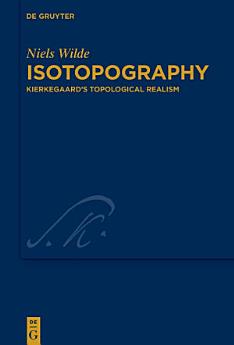Isotopography: Kierkegaard’s Topological Realism
Niels Wilde
Aug 2024 · Kierkegaard Studies. Monograph Series Book 50 · Walter de Gruyter GmbH & Co KG
Ebook
280
Pages
reportRatings and reviews aren’t verified Learn More
About this ebook
While the concept of place remains undertheorized in Kierkegaard research, this study argues that place is at the center of Kierkegaard’s thinking. The first part of the book shows that Kierkegaard’s notion of situatedness as being-placed in a socio-historical situation conditioned by a situation prior to situatedness points to a realist position and a flat ontology.
Secondly, the book develops a detailed analysis of the ontological structure of the existential place (the place we ourselves are) and concrete places (the places where we are). Place opens a qualified space within bounds (the existence-sphere), an atmosphere of elemental attunement and attuned elementality.
Finally, the book collects the dots from part one and two in a topological realist approach to Kierkegaard’s theology and three main definitions of God: God is love, God is that everything is possible, and God is the middle term. The book concludes that Kierkegaard’s existential topography reveals a realist position: where we are is never exhausted by being the place where we are.
About the author
Niels Wilde, Universität Aarhus, Dänemark.
Rate this ebook
Tell us what you think.
Reading information
Smartphones and tablets
Install the Google Play Books app for Android and iPad/iPhone. It syncs automatically with your account and allows you to read online or offline wherever you are.
Laptops and computers
You can listen to audiobooks purchased on Google Play using your computer's web browser.
eReaders and other devices
To read on e-ink devices like Kobo eReaders, you'll need to download a file and transfer it to your device. Follow the detailed Help Center instructions to transfer the files to supported eReaders.







